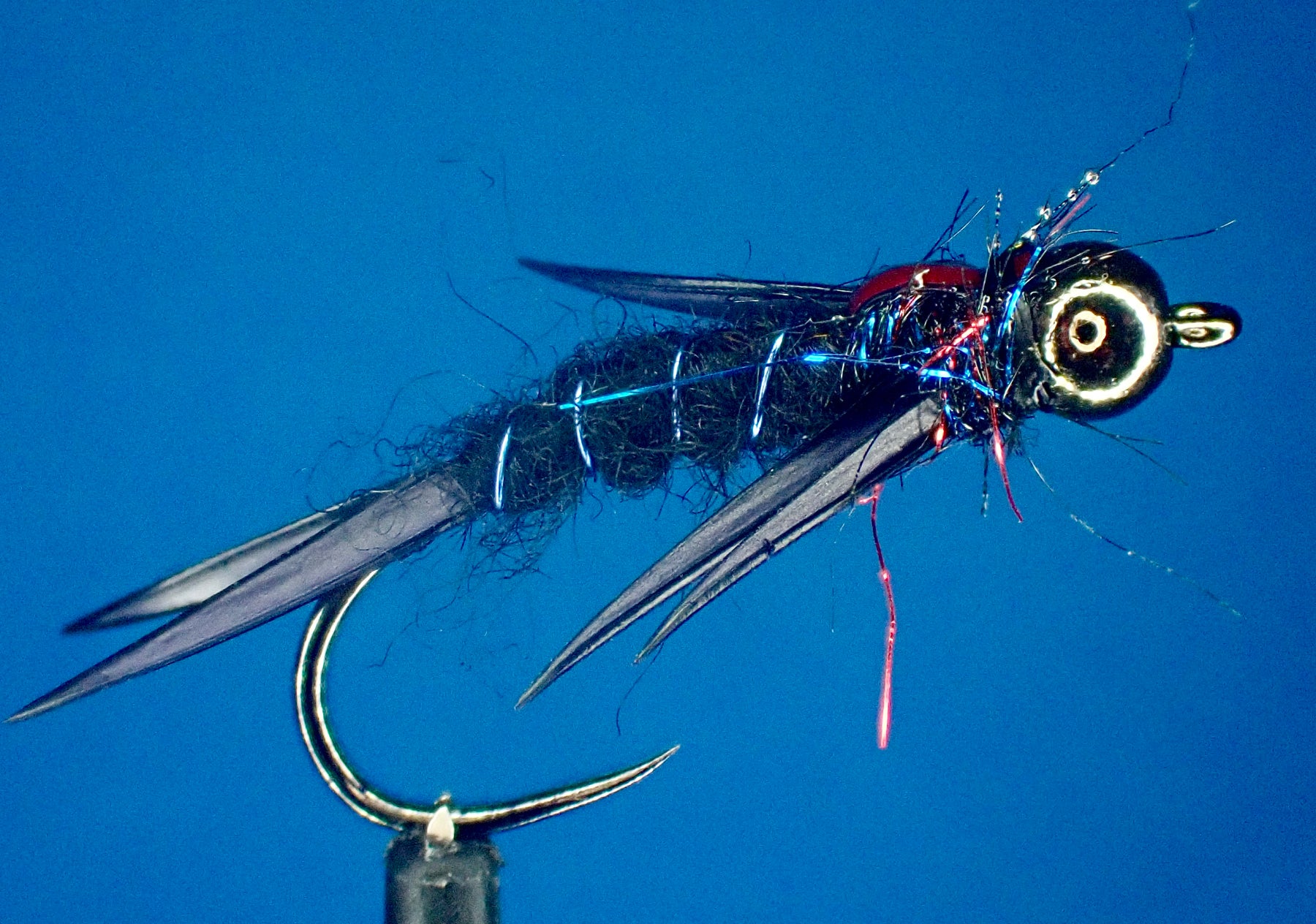
The Stonefly: A Vital Food Source for Fish
The Stonefly Life Cycle
Stoneflies, scientifically known as Plecoptera, have a fascinating life cycle that consists of several distinct stages. Understanding these stages is essential for fly anglers looking to imitate Stonefly patterns effectively. The Stonefly life cycle can be summarized as follows
Nymph Stage
Once the eggs hatch, Stoneflies enter the nymph stage, which is the longest phase of their life cycle. Stonefly nymphs are aquatic and live beneath the surface of the water, typically under rocks and in crevices. They have distinct segmented bodies, six legs, and prominent gills to extract oxygen from the water. Stonefly nymphs can live in this stage for up to several years, depending on the species.
Dirty Black Stonefly Nymph Fly Tying Tutorial
Materials List:
-
Hook: Moonlit Premium TOGATTA ML601 sz6-10
-
Wire: Semperfli Lead Free Wire 0.5mm
-
Bead: Moonlit Tungsten Bead Black Nickel 4.6mm or 3.8mm
-
Thread:Semperfli Classic Wax 6/0 Black
-
Tail: Semperfli Black Goose Biot
-
Body: Semperfli Dirty Bug Yarn Black
-
Rib: Semperfli 2mm Ice Blue Tying Wire
-
Thorax: Snake River Fly Club Dub Firecracker Black
-
Legs: Semperfli Black Goose Biots
- Shell Case: Semperfli 1/32" Medium Mirror Red/Semperfli Large 1/16"
-
Mirrage Tinsel
-
UV: Semperfli No Tack UV Glue
- UV Light: Moonlit UV Pen
Adult Stage
Once Stoneflies complete their pupal development, they emerge from the water as winged adults. Unlike other insects, Stoneflies are poor fliers and are often clumsy in the air. They are primarily active during the evening or night, making them less accessible to fish as a surface food source compared to other insects like mayflies or caddisflies.
Why Stoneflies Are an Important Food Source for Fish
Stoneflies play a crucial role in the diet of many fish species, making them a prime target for fly anglers. Here's why Stoneflies are so important as a food source:
Abundance: Stoneflies are often found in healthy, clean freshwater environments, making them readily available to fish in such habitats.
High Nutritional Value: Stonefly nymphs are rich in protein and nutrients, making them an excellent source of sustenance for fish. This high nutritional value attracts fish to actively seek out Stonefly nymphs.
Year-round Availability: Unlike some other aquatic insects that have limited hatches throughout the year, Stoneflies can be found in various life stages year-round, providing a consistent food source for fish.
Fishing Stonefly Insects: A Regional Hatch Chart
To maximize your success as a fly angler, it's essential to know when and where to fish different Stonefly insects. While Stonefly species and hatches can vary by region and even specific water systems, here's a general hatch chart for the United States, North America, and Europe:
United States:
Western Rivers (e.g., Colorado, Montana, Idaho): Large Golden Stoneflies (Salmonfly and Skwala) hatch in late spring and early summer (April to June).
Eastern Streams (e.g., Appalachian region): Little Yellow and Black Stoneflies hatch in late winter to early spring (January to March).
North America (Canada):
Northern rivers and streams: Stonefly hatches typically occur from late spring to early summer (May to July), depending on the region and local conditions.
Europe:
European rivers: Stonefly hatches are prevalent from late spring to early summer (May to June) in countries like the UK, France, and Germany.
Fishing Stonefly Nymphs Year-round
One of the unique aspects of Stoneflies is their nymphs are available year-round. While adult Stoneflies might not be as readily available to fish during all seasons, nymphs can be a go-to option for fly anglers throughout the year. Here's how to effectively fish Stonefly nymphs year-round:
Fly Selection: Choose Stonefly nymph patterns that match the local species and size prevalent in your area.
Retrieve Techniques: Use various nymphing techniques such as dead drifting, swinging, or bouncing your fly to imitate the natural movement of Stonefly nymphs in the water.
Depth Adjustment: Adjust your nymph's depth according to water conditions. In faster currents, nymphs are often closer to the bottom, while in slower flows, they may be higher in the water column.
Seasonal Adjustments: Be aware of Stonefly species' emergence patterns in your area, and adapt your fishing strategy accordingly. Focus on the nymph stage when Stonefly adults are not active.
Conclusion
Stoneflies are not only intriguing insects but also a vital food source for fish in various aquatic ecosystems. Understanding their life cycle, significance as a food source, and when and where to fish them can significantly enhance your fly fishing success. Whether you're fishing in the United States, North America, or Europe, Stonefly nymphs are a reliable option year-round, providing you with ample opportunities to test your skills as a fly angler and enjoy the thrill of catching trout and other fish species. So, next time you hit the water, be sure to have some Stonefly patterns in your fly box.

Leave a comment